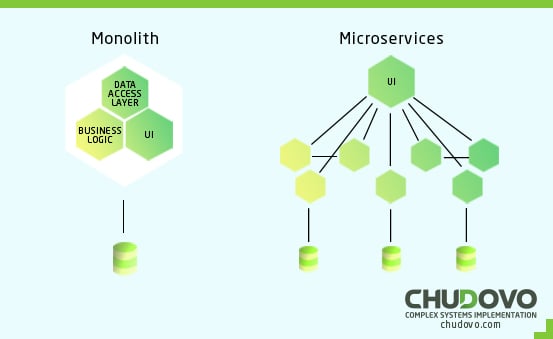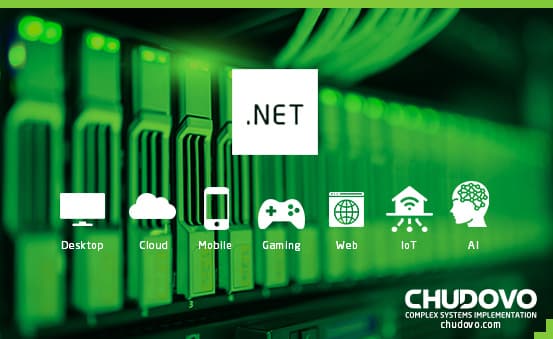What are Microservices and Microservices Architecture and When We Should Use It?
Table of content
A new buzzword among advanced development organizations, Microservices was first coined in 2011. It is a state-of-the-art method used to design software applications that are faster, flexible, and stable than ever before. Also known as ‘Microsoft architecture,’ the practice heads towards a software system in which services are fine-grained, and protocols are lightweight.
Though microservices doesn’t have a clear definition, it is stealing the spotlight in the latest day blogs, articles, and discussions on social media. The presence of ample microservices tutorials by distinguished sources says it all. After all, the concept is highly characterized by top-hole features that make it prominent for agile enterprises to move towards DevOps and continuous testing. Automated deployment, decentralized management, and sheer intelligence in the endpoints are impeccable traits that define its competitiveness. Let’s dive deep into what are microservices and microservices examples for better understanding.
What Are Microservices?
To all the novices looking for a straightforward answer to what are microservices, it is hard to find a precise definition of the notion. Though Martin Fowler, the popular American software developer states, “The microservices architectural style is an approach to developing a single application as a suite of small services, each running in its own process and communicating with lightweight mechanisms.”
Simply put, Microservices are a collection of services that helps software organizations develop and unveil the delivery of large and complex applications like a pro. With its usage, they can also evolve their technology stack for out-of-the-box performance in every aspect.
Doubtlessly, migrating to the microservices architecture framework is a smart idea to keep in line with future trends. However, as it is not child play, basic and intermediate developers need to have deeper insights into its architectural style, its ever-increasing list of languages and tools, risk, and benefits.
Pro Tip: For learners preparing for microservices interview questions looking forward to having a grasp of the microservices architecture framework at an advanced level, consider spending time on the finest microservices tutorial offered by various sources.
Characteristics of a Microservice Architecture
Before the microservices framework, the top organizations, including Netflix, PayPal, Twitter, Amazon, and more, plumped for the monolithic system. A system is said to be ‘monolithic’ if it has interwoven functional aspects rather than having separate architectural elements.
In contrast to monolithic vs microservices, the latter is easier to understand and better for creating flexible applications with logical services. This being the reason, all the aforesaid companies evolved from monolithic to microservices architecture. Here is a list of additional characteristics that makes Microservices components fit to use in the modern software world.
- Each service is characterized by well-defined service contracts.
- Each service is independent and loosely coupled.
- Service abstraction provides a complete list of libraries and environmental details.
- Services are stateless, and there is no need to maintain a conversational state.
- Services are discoverable, interoperable, and composable.
- Services have decentralized data management.
- Services have evolutionary designs.
What Are The Advantages of Microservices?
1. Easy To Understand
One of the core microservices advantages is that it is split into smaller and simpler components, thus making the developed application or software system easy to understand. A business can be on the crest of waves by just concentrating on a specific service in association with its goals. This makes the microservices framework better in the race of monolithic vs microservices.
2. Convenient Debugging and Maintenance
Developers can easily debug and test the applications developed using microservices. Moreover, the modules in the project go through continuous delivery and testing, thus allowing developers to put forth error-free applications.
3. Enhanced Scalability
In contrast to monolithic vs microservices, the latter is more scalable for the fact that it has independent elements. Unlike monolithic, the microservices’ applications don’t need to be scaled often. This brings the benefits of cost and time effectiveness in the overall organization.
4. More Flexibility And Productivity
Other interesting microservices advantages include flexibility and productivity. The engineering team is not limited to the particular technology stack but can opt for several technologies and frameworks to develop and deliver the service. Overall, this brings whopping productivity in the procedure and operations.
The option to choose from five different languages is the additional plus point of the method. These include Golang, Java, Python, C++, and Ruby. Out of all, Java microservices and Python microservices are popular among beginners. To a surprise, one can also advance details about the concept by signing for various Java microservices tutorials on the Internet.
Types Of Microservices
It ain’t a secret anymore that Microservices is a go-to solution to develop software applications. With a list of common Microservices design patterns, professionals can create successful services without any trial and turbulence. To understand its usage in-depth, check out the two broad categories of the method.
1. Stateless Microservices
As the name suggests, Stateless Microservices is when a client sends a request to the server to achieve a response back as per the given state. There is no need to maintain the session state between the requests. The significant stateless Microservices example is – In case any of the instances are eliminated from the service, there will be no impact on the overall processing logic.
The top benefits of choosing stateless microservices comprise elasticity, flexibility, easy maintenance, easy management, capability to create a seamless and consistent experience on the user’s side. With all these follow-on benefits stateless microservices framework is popularly harnessed by distributed systems.
2. Stateful Microservices
Opposite to that of stateless microservices, stateful microservices maintain service request states when they communicate with each other. The common instance of stateful microservices is when a client sends a request to the server in the hope of a response. It again sends the request if in case of no response by the server. Although it is a better choice most of the time, its serve design is comparatively complex to implement.
The top-notch microservices advantage in the case of the stateful category is that it creates substantial value for end-users. It is finest to use in the cases when a group of tasks has to be combined into one step or when a group of tasks is part of one transaction.
When should we use Microservices?
Clearly, the Microservices framework is a hot trend and has witnessed a steady spike in adoption since 2014. It has ample benefits for developers and contains specific features that help a software organization stand among the crowd. However, jumping on the bandwagon isn’t always necessary. Following any business trends just because competitors have adopted it makes no sense, especially when the method is not suitable for your business operations or circumstances. Then, how to determine that when is the best time to use microservices?
There are certain ideal situations when one is highly in need of implementing the microservices frameworks. Microservices and containers are required to be used for lodging scalability, speed, and easy manageability in a monolithic application, for developing extremely agile applications, and for putting the use of business applications across diverse channels. Moreover, an organization is also suggested to migrate to one of the suitable microservices patterns when it has to rewrite the legacy applications in the latest programming languages (Java, Python, C++, Ruby, and Golang).
Microservices architecture are used
1. Amazon
Amazon had a single monolithic application in the 2000s. However, in contrast to Microservices vs Monolith, the latter made it complex for developers to untangle dependencies every time they had to upgrade the system. In 2001, Amazon broke its monolithic application into small and service-specific applications. Today, the company proudly called its service-oriented structure – microservices architecture.
2. Netflix
Netflix is a popular example when it comes to Microservices patterns. In 2008, it was facing scaling challenges, as a result of which it was not able to deliver DVDs to its members. In 2009, the company tried to stamp out the problem by splitting its monolithic architecture into microservices (service by service). It helped Netflix overcome its scaling challenges and service outages.
3. Uber
The ride-sharing service business, Uber faced obstacles while developing and unveiling new features and fixing bugs. To eliminate the challenges, it broke the monolithic applications into cloud-based microservices. As a consequence, developers managed to create various handy features for passengers, such as trip management, passenger management, and others.
4. Other Microservices Examples
There is a large list of companies that head their execution to microservices patterns. Simply because, in comparison to Microservices vs monolith, the latter made them struggle with scalability and flexibility issues. Other top companies harnessing the Microservices framework include Etsy, Coca-Cola, eBay, Gilt.com, Spotify, and Zalando.
Testing Microservices
Building a microservices application using Microservices design patterns only operates smoothly when it is tested for its efficiency. The common types of testing methods used to verify the service-based applications are Unit Testing, Contract Testing, Integration Testing, End-To-End Testing, and UI/Functional Testing. Let’s discuss them in detail.
1. Unit Testing
Unit Testing for .NET microservices and others is meant to ensure that applications run as expected. The scope of the test is internal to the service and large in volume. Be it .NET microservices or any other framework within the service; the test should ideally be automated.
2. Contract Testing
Contract testing is implemented to verify the response of all the services independently. In case of any dependency, it is then stabbed to mitigate the complicated behavior of Microservices design patterns. This test ensures that users should not require to change the code over longer durations.
3. Integration Testing
Integration tests for .NET microservices and other Microservices frameworks are meant to verify that components interactions work as expected. It depends on the functioning of inter-service communications, in which the service call is made with integration to external services.
4. End-To-End Testing
When there is a need to determine whether the system as a whole runs smoothly, end-to-end testing should be supposed to be in action. It ensures that the entire process flow of Microservices patterns works flawlessly and meets all the requirements.
5. UI/Functional Testing
It is high order testing as it evaluates the system such that it works out to be prominent for the end-user experience. At this level, it seems like users are trying to communicate with the system. If the results came out to be expected, it means that databases, internal and third-party services, and interfaces work together perfectly.
The Final Words
Needless to say, Microservices architecture is a key solution for software developers to develop go-to applications for business expansion and success. The top-hole features of the method and its bountiful benefits prove that it is sound and competitive to be used in current and future software practice. Moreover, as there are various Microservices frameworks and programming languages to implement, it provides developers with extreme flexibility.
Thus, it would not be wrong to say that Microservices, be it microservices architecture Java or in other programming languages, is the future of the business world. To follow up the trends and make the best out of them, beginners can take their time and learn from the finest Microservices tutorials and Java microservices tutorials for better insights. Don’t forget to prepare for Microservices interview questions to hit the jackpot in the future.





